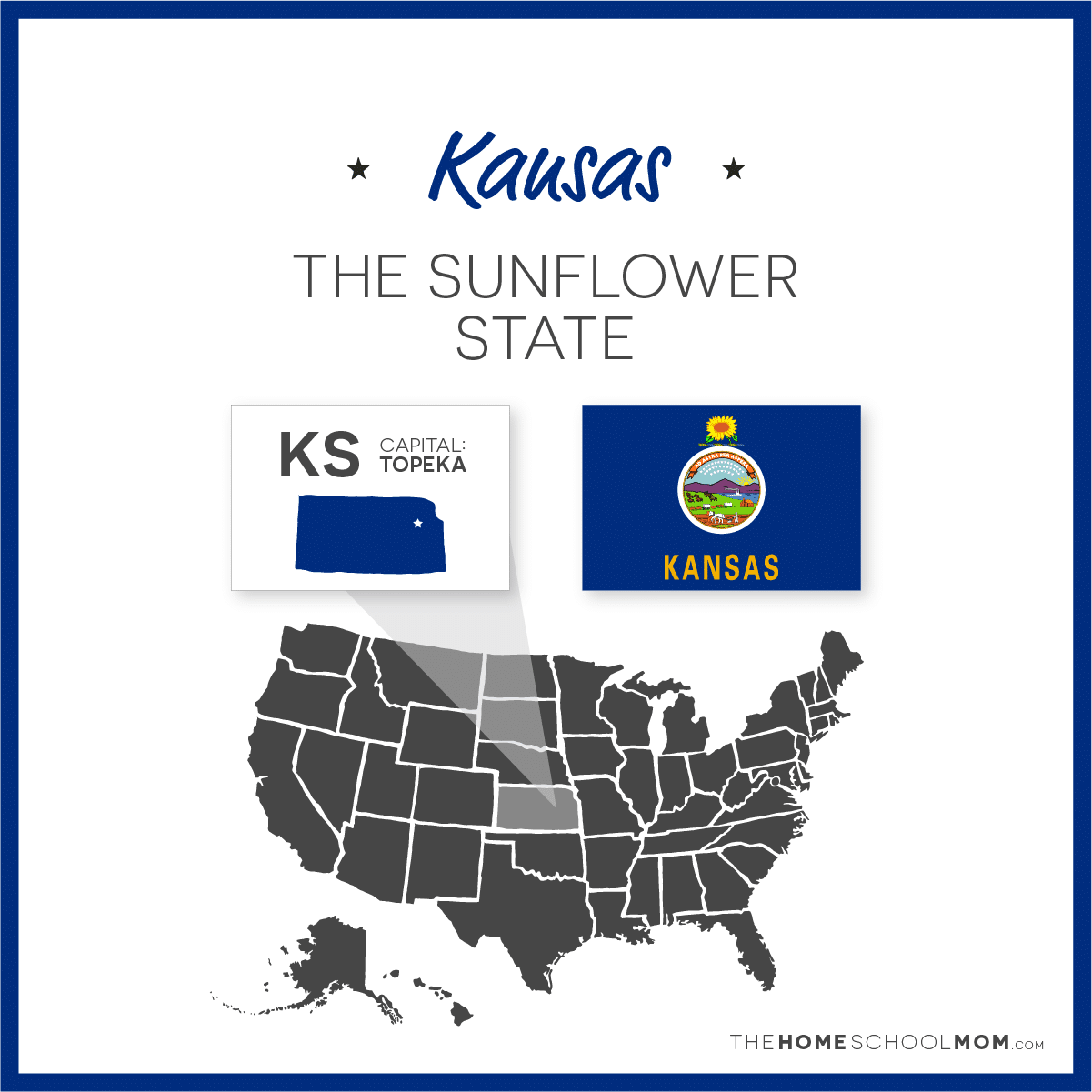Kansas Facts for Kids
Kansas was the 34th state to join the union. It became a state on January 29, 1861.
Capital - Topeka
Abbreviation - KS
Nickname - Sunflower State
Motto - "Ad astra per aspera" - To the stars through difficulties
Song - Home on the Range
Bird - Western Meadowlark
Flower - Sunflower
Insect - Honey Bee
Area - approximately 82,282 square miles

Learn more about Kansas
Dwight D. Eisenhower Presidential Library and Museum
Learn about Eisenhower's childhood, presidency, and his life after The White House.
Brown v. Board of Education National Historic Site (Topeka)
The Historic Site is located at the site of Monroe Elementary School, a segregated Black school in Topeka that was the subject of the case brought by Oliver Brown vs. the Board of Education of Topeka. The U.S. Supreme Court decision in Brown v. Board of Education (1954) is one of the most pivotal opinions ever rendered by that body. Learn about the history behind the case and the related cases that came before it.
Nicodemus National Historic Site
Formerly enslaved African Americans left Kentucky at the end of the of post-Civil War Reconstruction period to experience freedom in the "Promised Land" of Kansas. Nicodemus represents the involvement of African Americans in the westward expansion and settlement of the Great Plains. It is the oldest and only remaining Black settlement west of the Mississippi River.
Old Meade County Museum
Stories from the history of Meade County, including the notorious Bonnie & Clyde, Prehistoric Meade County, the Mennonite Community, the Dalton Gang, farming the Dust Bowl, and more.
Fort Larned National Historic Site
Fort Larned's nine original sandstone buildings, built between 1866 and 1868, comprise the best-preserved fort from the Indian Wars period. Take the virtual tour or go deeper in the history and culture of the fort.
The Post Rock Museum
Early settlers encountered a lack of trees when they arrived in Kansas. After a lifetime of being surrounded by wood to use for building, they had to turn to the resources they could get from the land. Literally. They used sod for their houses, and eventually limestone quarried nearby was used for building structures for humans and animals, and fence posts to contain herds.
Fort Scott National Historic Site
When the fort was established in 1842, the nation was still young and confined largely to the area east of the Mississippi River. But even before soldiers first arrived at Fort Scott, events were set in motion that would dramatically change the nation.
Kansas Historical Society
A variety of lesson plans for the classroom from the Kansas Historical Society for K-12, although most are for middle or high school.
Library of Congress
Selected Library of Congress primary sources with a Teacher's Guide
The 50 States - Kansas
From TeachersFirst. A comprehensive resource on Kansas
Mr. Donn.org - Kansas
Kansas resources from Mr. Donn, who offers one of the largest collections of social studies resources available
50 States.com - Kansas
Facts & Trivia about Kansas
RoadsideAmerica.com - Kansas
Unique tourist attractions and landmarks in Kansas
Awesome America - Kansas
Loads of fun facts, photos, and travel information about Kansas.
Kansas Map/Quiz Printout
EnchantedLearning.com
KS Resources for Educators from Locales:
- Atchison County
- Allen County
- Barton County
- Geary County
- Franklin County
- Hillsboro
- Kearny County
- Leavenworth County
- Lecompton
- Lindsborg
- Meade County
- Riley County
- Shawnee
- Wamego
Learn more through virtual and in-person Kansas field trips ...






